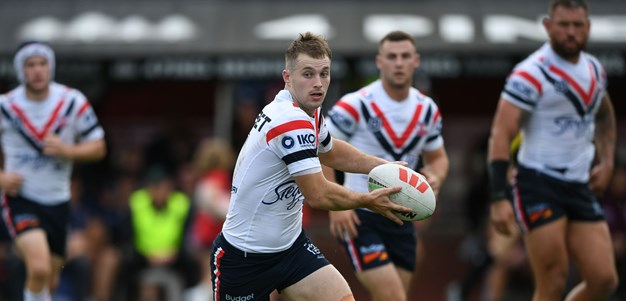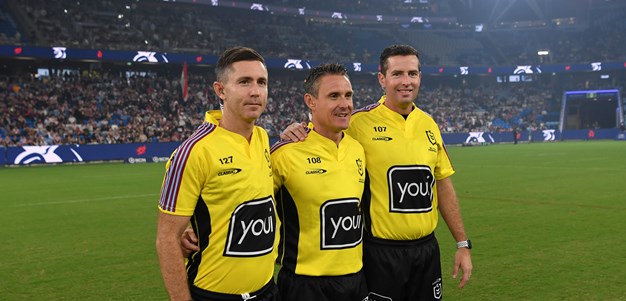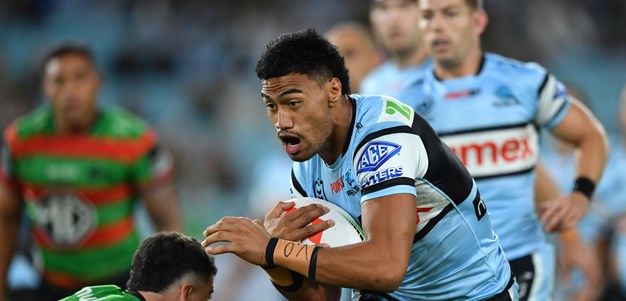More than ever before, in 2010 fullbacks are showing they are every bit as important as playmakers as they are simply carting back the ball from kicks. <b>Tim Matchett investigates for Big League magazine.</b><br><br>The debate over which is the most important position on a footy field has been waged for as long as rugby league has been played, and doesn’t look like concluded any time soon. But while it’s an argument that can never be won or lost, this season has reminded many that a team’s custodian wears the number one for a reason, as fans are continually spoiled with ever-amazing fullbacks that have dominated the competition so far this year.<br><br>At a time when new stars at the back are uncovered every week, Big League spoke with the man who knows as much about the position as any, Gary Belcher, to ask him if the role has changed since his playing days, who impresses him most of the current crop, and why it’s such a key part of any team’s make-up.<br><br>“Obviously there’s a role in defence that hasn’t changed much at all, and in attack the role certainly hasn’t changed, although some people think it has,” Belcher says. “They tend to think that fullbacks used to just stand at the back waiting for the ball to be kicked to them, but for a long time they’ve been required to come into the line and attack as well.”<br><br>And while some pundits believe the role has changed as fullbacks are often playing as an extra five-eighth, Belcher says that’s nothing new.<br><br>“I can’t think of any fullbacks going back 20 years who you could categorise as just a kick-returner.”<br><br>Belcher says fullbacks have always needed to be involved in the game, and that while some do it differently to others, versatility is the key to being a good fullback – something Belcher believes many of the modern custodians posses.<br><br>“Some will stand up in the line a lot more, like Matty Bowen, while others will chime in out wide a little more. Jarryd Hayne will be up in the line, and Billy Slater does a bit of a duel job – he’ll hang around the middle area as an extra five-eighth or he’ll attack out wide on the fringe too. I’m really happy that Darius (Boyd) has started to do that little bit more, because he was playing predominately as a kick receiver and in the wide-running fullback role, but now he’s developed his passing game a lot better, too.”<br><br>And you only need to have a quick look at the stats to understand why fullbacks in 2010 are as important to a team as any position on the field. <br><br>Five of the competition’s fullbacks (Lance Hohaia, Luke Patten, Hayne, Boyd, and Slater) have made more than 300 touches of the football so far this season, demonstrating an incredible level of involvement.<br>But it’s the quality of involvement that has been most impressive this season, especially the fullbacks’ ability to set up plays, rather than just finish them – although Lachlan Coote’s competition-leading 15 tries speaks for itself.<br><br>Fullbacks this year are creating as many line-breaks as halves, with Boyd (12), Slater (12), Farrar (10), Hayne (9), and Carney (9) at the top of the list of line-break assists, while others have contributed greatly from the back, with Nathan Gardner, Lachlan Coote, and Shannon Gallant making huge metres from kick returns – 85.2, 77.1, and 75.1 metres per game respectively from kick returns alone.<br><br>And it’s not just in attack that the final men are getting it right. Seven fullbacks (Josh Dugan, Patten, Shannon Gallant, Hayne, Rhys Wesser, Boyd, Beau Ryan) have nine or more try saves this year – with Hayne single-handedly keeping the opposition out on 13 occasions.<br><br>For Belcher, it’s no surprise to see fullbacks of the 16 clubs performing so well, and he says one of the most pleasing things for him is that skill and intelligence haven’t been overtaken by sheer size, pointing to the variety of size amongst fullbacks in the past and present.<br><br>“There were always big and small guys, with Jonathan Docking running around in the late 1980s, and probably the biggest I could think of would be Graham Eadie in the early 1980s. He could’ve played in the back row if he had to. Look at Nathan Gardner at the Sharks – he’s tiny! There’s no fixed rule about player size.<br><br>“I think one of the talents that people don’t look at is the ability to read the play, and to be a really good communicator. That’s one of the problems you have with young guys, and that’s why I’ve been really impressed with Lachlan Coote. I can see he’s a really good communicator and is quite willing to order big guys around defensively, and to get the ball when he needs it. He also communicates really well with his halfback, and that’s why those kicks are going so well.”<br><br>In the end, Belcher believes there are no set rules about what makes a good fullback, but says today’s players show what good fullbacks can do, with contributions all over the park that coaches and fans love to see. <br><br>“Fullbacks are one of the most valuable players on the field, so I don’t disagree with all the talk about fullbacks being the ‘spine’ of the team… If you’ve got someone who can do damage around the middle of the ruck, like Slater or Lance Hohaia, when the other side is starting to get tired, then you go a long way to winning.<br><br>“These guys can do some damage around there or play at first receiver and try to get those tired forwards. But if you also have a guy who can run the edges really well and run the ball back really well, then you’re starting to get a pretty complete player.”<br>
You have skipped the navigation, tab for page content

National Rugby League respects and honours the Traditional Custodians of the land and pay our respects to their Elders past, present and future. We acknowledge the stories, traditions and living cultures of Aboriginal and Torres Strait Islander peoples on the lands we meet, gather and play on.


